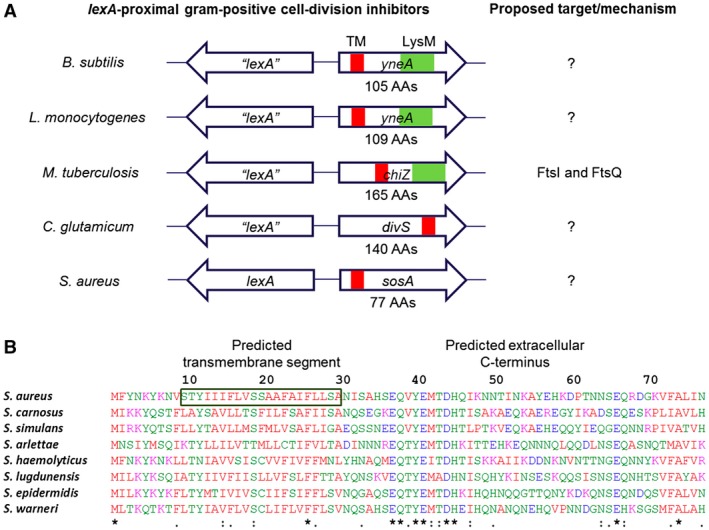Figure 1.

Gram‐positive SOS‐controlled cell division inhibitors. A. Schematic representation of genes encoding characterized Gram‐positive SOS‐regulated cell division inhibitors (not drawn to scale) including the uncharacterized sosA from S. aureus. Despite considerable sequence divergence, these genes are commonly chromosomally co‐localized with lexA homologous genes. The cell division inhibitors carry a single transmembrane domain (TM), and several proteins have an additional LysM domain. B. Alignment (CLUSTAL O[1.2.4]) of SosA sequences deduced from open reading frames next to lexA in S. aureus strain 8325‐4 (YP_499864) and seven Staphylococcus species: S. carnosus (CAL27889), S. simulans (AMG96201), S. arlettae (EJY94737), S. haemolyticus (YP_253482), S. lugdunensis (YP_003471776), S. epidermidis (YP_188489) and S. warneri (EEQ79882). The proteins are 77 amino acids long and are characterized by a predicted transmembrane segment at AAs 10–30 (for S. aureus SosA) and a predicted extracellular C‐terminal (TOPCONS [Tsirigos et al., 2015]) with considerable sequence conservation at the membrane‐proximal portion (‘*’ indicates fully conserved residues, ‘:’ indicates conservation of residues with highly similar properties).
